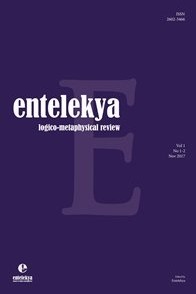Proclus on the Eternity of the World
Proclus on the Eternity of the World
The issue of eternity is as old as the history of humanity which caused to consist of sects, schools and idea circles with various discussions in philosophy and kalam. Although the inception of the discussions originates to Aristotle, Proclus is the first for systematically explaining the issue with the help of arguments in the history of philosophy. He is a Neo-Platonic philosopher who was recognized with his work titled On the Eternity of the World. Proclus has known as the philosopher who internalized views of Plato, besides he follows Aristotle about the eternity of the world. He tried to demonstrate the issue of the eternity of the world with eighteen arguments in his mentioned work. Ishaq b. Hunayn translated into Arabic nine of these arguments, and Shahrastani summarized eight of them in his Kitab al-Milal wa an-Nihal. English translation with Greek originally as eighteen arguments has been published. The work influenced in the Islamic world, especially in the view of the eternity of the world, was internalized by al-Farabi and Avicenna seriously criticized by al-Ghazali. Comprehending the opinions of Proclus on this issue will be suitable to understand the controversies over eternity in Kalam and Philosophy.
Keywords:
Aristotle, Plato, Proclus, the eternity of the world, philosophy argument,
___
- Erdemci, Cemalettin. “Proclus’un Alemin Kıdemine İlişkin Delilleri Üzerine.” Hitit Üniversitesi İlahiyat Fakültesi Dergisi 9 (2006), 153-170.
- Ibn al-Nadim, al-Fihrist. Ed. Ibrahim Ramadan. Beirut: Dar al-Ma’rifa, 1994.
- Proclus, On the Eternity of the World (De Aeternitate Mundi). Trans. Helen S. Lang and Anthony D. Macro, University of California, London 2001.
- Şahin, Eyüp and, Macic, Haris. “İslâm Felsefesine Bir Adım Olarak Neop-latonism (Yeni Eflatunculuk): Proclus ve Fârâbî Arasında Metafizik Bir Karşılaştırma.” Ankara Üniversitesi Sosyal Bilimler Dergisi 5, no. 2 (2014), 192-226.
- Türker, Mübahat. Üç Tehafüt Bakımından Felsefe ve Din Münasebeti. Ankara: Ankara Üniversitesi Dil ve Tarih- Coğrafya Fakültesi Yayın-ları, 1956.
- Başlangıç: 2017
- Yayıncı: İlyas ALTUNER
